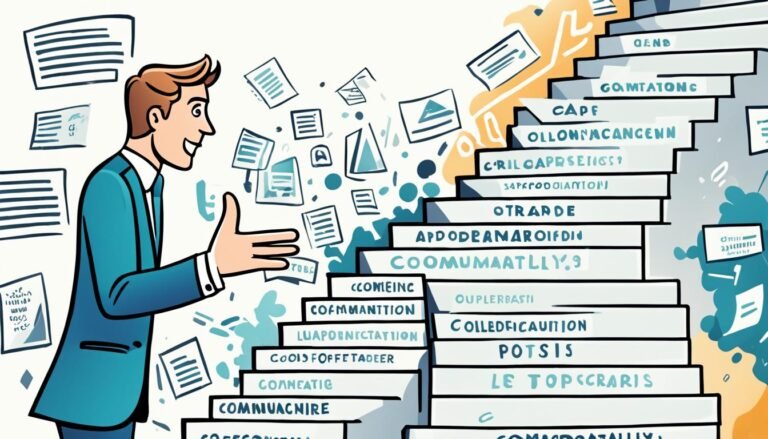Agility in Learning as a Soft Skill
Developing agility in learning as a soft skill helps you swiftly adapt, decide quickly, and problem-solve efficiently in fast-paced educational settings. Gaining this skill gives you a competitive advantage by boosting adaptability, enhancing problem-solving abilities, and improving knowledge retention. Understanding the dynamic nature of learning agility is key. Enhancing this soft skill allows for personalized learning experiences, increased motivation, and sharper critical thinking skills. Building resilience through learning agility involves embracing challenges, seeking feedback, and staying open to new experiences. Uncover how agility in learning can transform your educational journey.
Key Takeaways
- Agility in learning involves dynamic adaptation to new challenges.
- Quick decision-making and problem-solving are traits of agile learners.
- Enhancing agility leads to improved problem-solving skills and adaptability.
- Agile learners retain knowledge better and have a competitive edge.
- Developing a growth mindset and resilience are key to agility in learning.
Understanding Agility in Learning
To understand agility in learning, it's important to explore the dynamic and adaptive nature of acquiring knowledge and skills. Flexibility plays a critical role in the learning process, allowing individuals to adjust their approach based on changing circumstances. Being able to adapt to new information or challenges is a key aspect of agility in learning. Quick thinking is another essential component of this skill. The ability to think on your feet, make decisions rapidly, and solve problems efficiently are all traits associated with agile learners.
Research has shown that individuals who exhibit high levels of agility in learning are better equipped to navigate complex situations and learn new concepts more effectively. By being flexible in their thinking and quick to analyze and respond to new information, agile learners are able to grasp concepts more readily and apply them in various contexts.
In essence, agility in learning is about being able to pivot quickly, adjust your strategies as needed, and think critically in diverse situations. Developing this skill can lead to improved learning outcomes and increased adaptability in an ever-changing world.
Benefits of Developing This Skill
Developing agility in learning offers you a range of benefits, including heightened adaptability when faced with new challenges, improved problem-solving skills in dynamic environments, and the ability to retain knowledge more effectively.
These advantages have been supported by research that showcases the positive impact of agility on cognitive processes and learning outcomes. By honing this skill, you can expect to experience enhanced learning experiences and a competitive edge in an ever-evolving educational landscape.
Enhanced Adaptability in Learning
Enhancing adaptability in learning equips individuals with the ability to swiftly adjust to new information and challenges, fostering a more resilient and agile approach to acquiring knowledge. Through learning flexibility and innovative techniques, individuals can adapt their learning strategies to suit different contexts.
Adaptive learning allows for a more personalized and efficient learning experience, enhancing skill acquisition. Research shows that individuals who develop enhanced adaptability in learning exhibit higher levels of motivation and engagement, leading to improved retention of information.
This skill not only enhances knowledge acquisition but also boosts problem-solving abilities and critical thinking skills. By being open to new ideas and approaches, individuals can navigate the ever-evolving landscape of information more effectively.
Improved Problem-Solving Abilities
By cultivating enhanced problem-solving abilities, you can effectively navigate complex challenges and make informed decisions based on analytical reasoning. Developing critical thinking skills and fostering creative problem-solving techniques will empower you to tackle problems with confidence and efficiency.
- Increased ability to analyze situations objectively
- Enhanced capacity to identify root causes of issues
- Improved skill in generating innovative solutions
- Greater proficiency in evaluating different options
- Strengthened capability to implement effective problem-solving strategies
These benefits not only enhance your problem-solving skills but also contribute to your overall learning agility. Embracing these skills will enable you to adapt to new situations, think critically, and approach challenges with creativity and confidence.
Increased Knowledge Retention
Utilizing effective knowledge retention techniques is key to maximizing learning outcomes and long-term memory storage. By improving focus and actively engaging with the material, you enhance your ability to retain information.
Research shows that increased knowledge retention leads to better comprehension and application of learned concepts. When you actively participate in the learning process, such as by taking notes, summarizing key points, and teaching others, you reinforce your memory and understanding of the subject matter.
Improved focus allows you to filter out distractions and concentrate on the essential details, aiding in better retention. Active engagement, through discussions, quizzes, and practical exercises, solidifies your grasp on the material, making it easier to recall and utilize the knowledge in the future.
Strategies to Enhance Agility
Implementing diverse training methods can greatly boost the adaptability and responsiveness of individuals to change, fostering agility in learning. To enhance agility, consider the following strategies:
- Cross-Training: Engage in learning activities outside your primary area of expertise to broaden your skill set and adaptability.
- Scenario-Based Learning: Practice decision-making in simulated real-life scenarios to improve quick thinking and problem-solving skills.
- Feedback Mechanisms: Regular feedback from peers or mentors can help identify areas for improvement and encourage continuous learning.
- Interdisciplinary Studies: Explore topics from different fields to develop a holistic understanding and flexible thinking approach.
- Networking Events: Engage with diverse groups of people to gain new perspectives and insights, enhancing your ability to navigate various situations effectively.
Incorporating Technology for Learning Agility
To enhance learning agility, integrating technology tools and platforms can greatly improve adaptability and responsiveness in acquiring new knowledge and skills. Technology integration in learning agility involves utilizing digital resources, such as online courses, virtual classrooms, educational apps, and interactive multimedia content. These tools provide learners with the flexibility to access information anytime, anywhere, fostering a continuous learning environment.
Digital resources offer personalized learning experiences, catering to individual learning styles and preferences. They enable learners to engage with content in various formats, including videos, simulations, and interactive quizzes, enhancing knowledge retention and application. Additionally, technology integration facilitates collaboration among learners through online forums, group projects, and real-time communication tools, promoting social learning and knowledge sharing.
Research shows that incorporating technology for learning agility not only enhances information accessibility but also cultivates critical thinking, problem-solving, and digital literacy skills. By leveraging technology tools and platforms effectively, individuals can adapt quickly to new learning challenges, stay updated with industry trends, and develop a proactive approach towards continuous self-improvement.
Overcoming Challenges in Learning Agility
Addressing the persistent obstacles encountered in cultivating learning agility requires a strategic and proactive approach to surmounting these impediments effectively. Developing flexibility in learning and the ability to adapt quickly are essential components in overcoming challenges in learning agility.
Here are five key strategies to help you navigate and conquer these obstacles:
- Embrace a growth mindset to view challenges as opportunities for learning and development.
- Seek feedback regularly to identify areas for improvement and adjust your learning strategies accordingly.
- Set clear and achievable learning goals to stay focused and motivated throughout the learning process.
- Experiment with different learning techniques and tools to find what works best for you in different situations.
- Build a support network of peers, mentors, or professionals who can provide guidance and encouragement as you face challenges and work towards continuous improvement.
Cultivating a Growth Mindset
To foster a growth mindset, one must actively embrace challenges as opportunities for learning and development, a pivotal mindset shift in cultivating learning agility. Developing this mindset involves fostering growth through a belief that abilities and intelligence can be developed with dedication and hard work. Research indicates that individuals with a growth mindset are more resilient, adaptable, and open to new experiences, all of which are vital components of learning agility.
| Cultivating a Growth Mindset | Benefits |
|---|---|
| Embrace challenges | Opportunity for growth |
| Dedication and hard work | Development of skills |
| Resilience | Adaptability |
| Openness to new experiences | Learning agility |
Creating an environment that nurtures a growth mindset is essential for individuals looking to enhance their learning agility. By focusing on continuous improvement, seeking feedback, and seeing setbacks as temporary obstacles, one can foster a mindset that thrives on challenges and sees learning as a lifelong journey.
Building Resilience Through Learning Agility
Building resilience through learning agility requires a proactive approach to embracing challenges and adapting to change in order to thrive in dynamic environments. To effectively build resilience and foster continuous improvement, consider the following strategies:
- Embrace Failure: View setbacks as opportunities for growth and learning rather than obstacles.
- Seek Feedback: Actively solicit feedback to identify areas for improvement and adjust your approach accordingly.
- Develop Flexibility: Cultivate the ability to pivot and adjust course when faced with unexpected changes.
- Learn from Experience: Reflect on past experiences to extract valuable lessons that can inform future decisions.
- Stay Curious: Maintain a thirst for knowledge and seek out new learning opportunities to broaden your skills and perspectives.
Conclusion
In summary, fostering agility in learning is essential for success in today's rapidly changing world. Just like a gymnast who constantly adjusts their routines to new challenges, individuals who embrace learning agility can navigate obstacles with flexibility and precision.
By integrating technology, nurturing a growth mindset, and building resilience, you can enhance your capacity to learn and grow in any situation.
Stay nimble, stay curious, and embrace the journey of lifelong learning.








